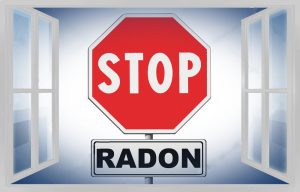Contractors and builders are providing a public health service by building radon-resistant properties. To put it plainly, it helps minimize the occurrence of indoor radon and consequently buyers’ risk of developing lung cancer. Using regular techniques and materials, new homes can mitigate radon. Implementing radon-resistant features will be a unique selling point for health-conscious buyers.
Do all builders implement features to mitigate radon?
The cost of implementing these radon-resistant features during construction may vary widely. Many contractors and builders include a few radon-resistant features in their new builds. However, the cost of including these additional features isn’t as significant. It’s usually less than implementing a radon mitigation system in the home post-construction.
A survey conducted by the National Association of Home Builders says the same. Since 1990, close to two million homes have been constructed with radon-resistant features. Builders who are unaware of radon-resistant features in new construction may seek this training from private service providers and state programs.
What can you add to new homes to mitigate radon?
Radon-resistant construction methods involve a passive radon system. This method takes over the vacuum effect that occurs in most homes by creating a barrier to gas entry. The system might include a PVC pipe that vents the radon gas outdoors.
Sometimes passive systems are not sufficient to prevent radon entry into the house. In such cases, you can install an electric fan. This pulls the gas from the soil beneath the house into the pipe. From here, it is tunneled to the outside. Installing a fan with additional wiring sets up an active radon-resistant system.
You don’t need special materials or skills when incorporating radon-resistant features during new home construction. While the methods used vary according to the type of foundation laid and building site requirements, there are a few basic features that all builders should implement to prevent radon seepage into homes.
1. Gravel
Apply a four-inch layer of coarse, new gravel below the foundation. The gravel layer enables gases from the soil such as radon, to move freely below the house. Builders label this as the gas-permeable layer or air-flow layer. Loose gravel enables all gases, including radon, to circulate.
This gas-permeable layer is added to houses with slabs and casement foundations. It is not useful in houses with crawl spaces. In some parts of the country, gravel may not be appropriate or too expensive. In such cases, alternatives are alright such as a collection mat or perforated pipe.
2. Vapor Retarder or Plastic Sheeting
Builders can place a vapor retarder or 6mm of polyethylene (heavy duty plastic) on the gravel surface to inhibit soil gases from invading the house. Pouring on the slab creates sheeting. This prevents the concrete from crowding in the gravel layer.
Place the sealed seams on the plastic sheeting under the slab and on top of the gas-permeable layer to prevent radon gas from leaking into the house. In crawl spaces, you can layer the plastic sheeting on top of the crawlspace.
3. Use a Vent Pipe to Mitigate Radon
Once the slab is poured, a 3 or 4-inch PVC schedule 40 pipe is stubbed up. It resembles pipes used in plumbing. This particular pipe runs vertically in the house’s conditioned space to the roof. This safely vents the radon and other gases out of the house. A certified radon specialist or plumber will label it as “Radon System”.
4. Caulking and Sealing
The contractor will seal all cracks, crevices, walls, and openings in the foundation floor and the slab perimeter with polyurethane caulk. All possible openings within the foundation are sealed. This creates a permanent barrier between the house and the gases outside.
5. Junction Box
The contractor may place an outlet or electrical junction box in the attic to use with the vent fan. You can add the junction box to the attic to facilitate the installation and wiring of the vent fan. For instance, if you opt to activate a passive system because the lab test results reveal radon of 4pCi/L or more. You can also place a different junction box in the living area to power the fan alarm. The alarm will sound if the vent fan stops working properly.
Installing these radon-resistant methods in a new home helps health-conscious buyers make the right decision. Not including these radon mitigation features isn’t a great idea. It can be a problem later on. Once the radon levels are high, the cost of correcting the problem will be higher for home-buyers.
Would you like to learn more about radon-resistant features to include in your new home? Get in touch with Atlantic Radon Mitigation today.




